What's a Builder Loan? Unlocking the Secrets to Financial Growth
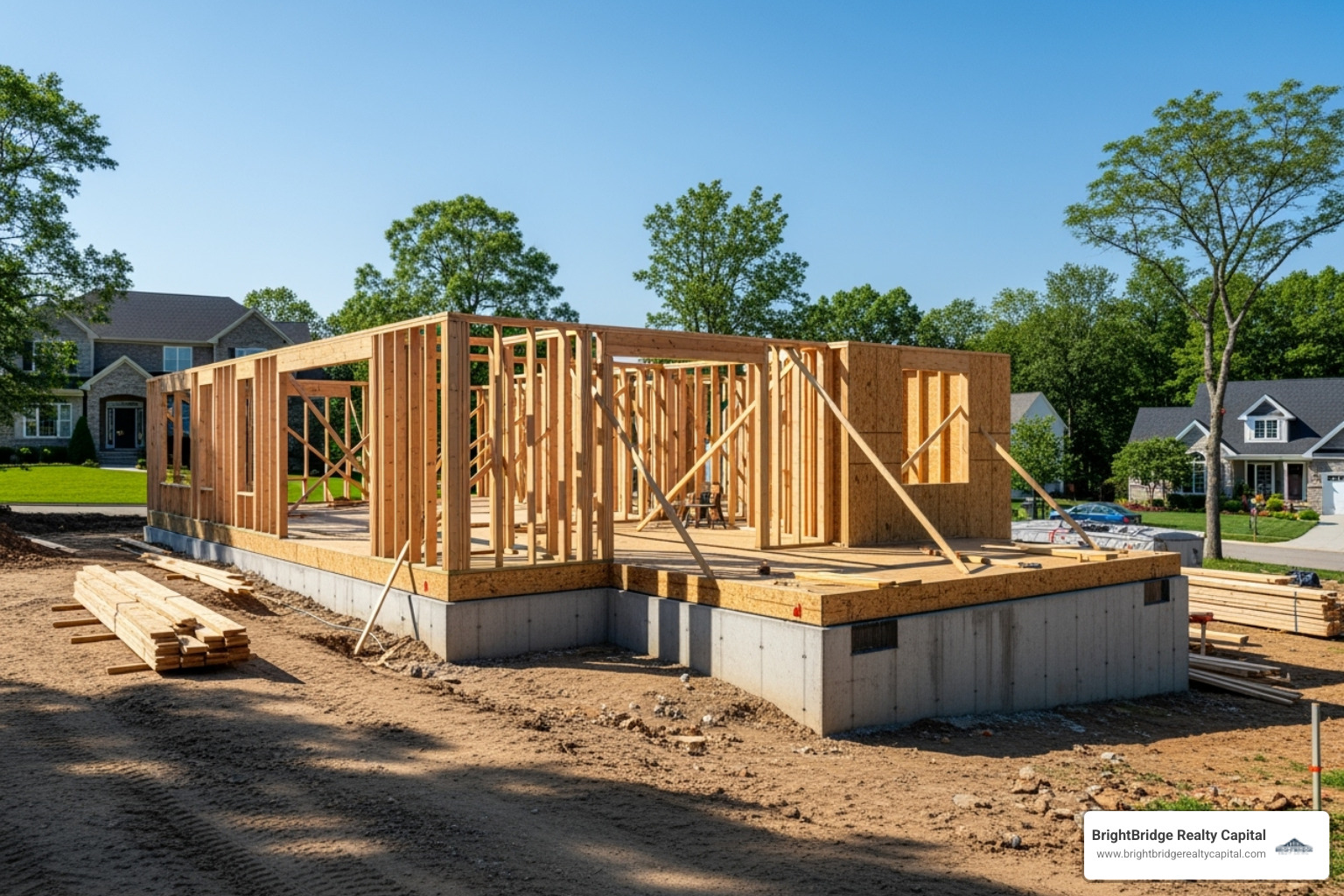
Why Builder Loans Are the Key to Construction Success
A builder loan is short-term financing for new home construction or major renovations, funded through progressive disbursements tied to project milestones. Unlike traditional mortgages that provide a lump sum, builder loans release funds in stages as your project reaches key completion points, offering a flexible funding structure traditional mortgages can't match.
Quick Builder Loan Overview:
- Purpose: Finance ground-up construction or major renovations
- Term: Typically 6-18 months during construction phase
- Funding: Progressive draws based on construction milestones
- Interest: Usually interest-only payments during construction
- Conversion: Often converts to permanent mortgage upon completion
- Down Payment: Generally requires 20-25% of total project cost
This structure helps manage the high risk of the construction phase for both builders and lenders, requiring detailed budgets and regular inspections to keep projects on track. Builder loans open doors to significant financial growth opportunities for real estate investors.
I'm Daniel Lopez, a loan officer at BrightBridge Realty Capital. My experience helping investors steer construction financing has shown me that understanding these loans is crucial for building wealth through real estate development.
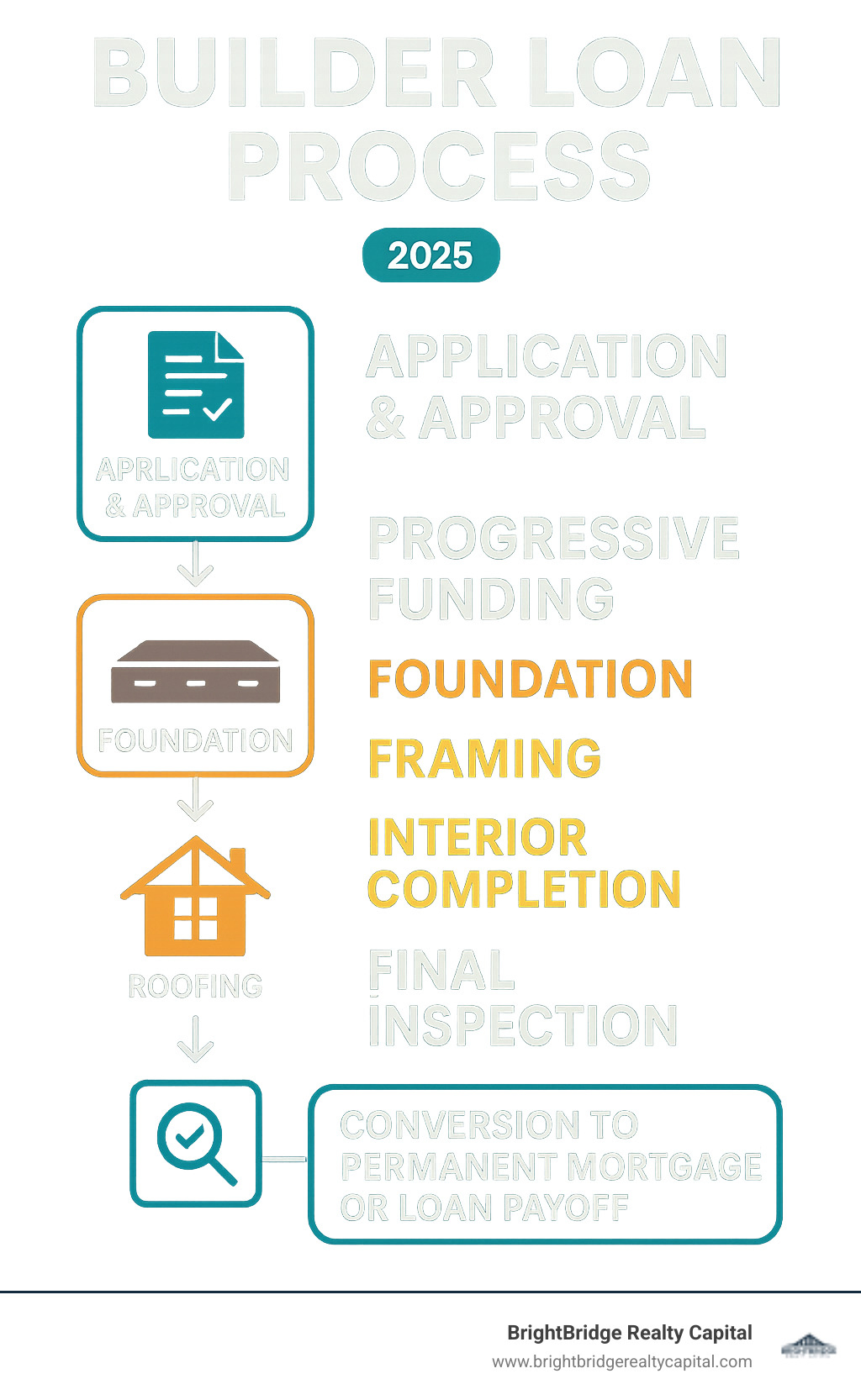
Easy builder loan word list:
How Construction Financing Works: From Blueprint to Move-In
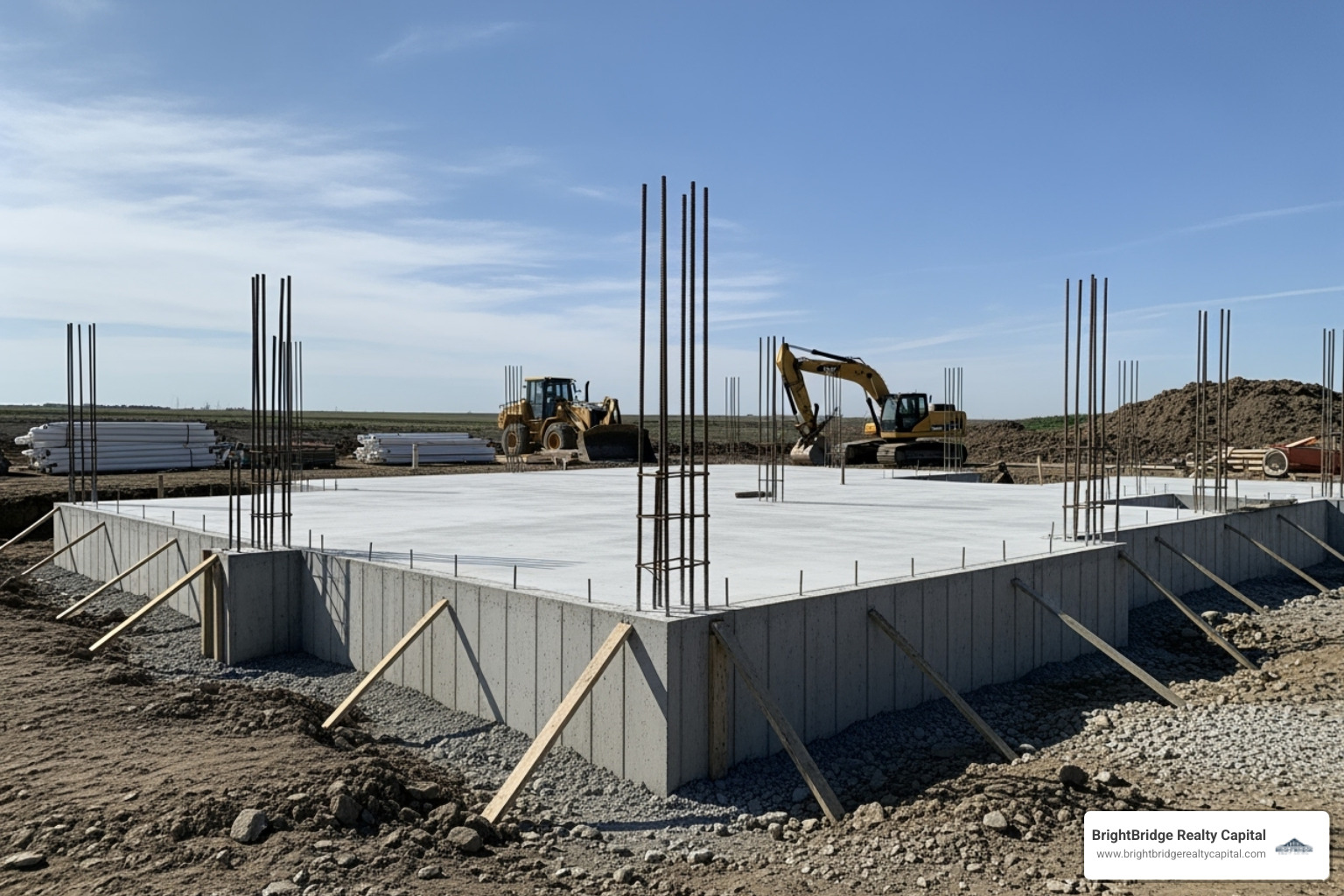
A builder loan releases funds in timed stages, matching your project's rhythm. This progressive funding is a smart risk management tool. Lenders release money only after an inspector verifies that a construction milestone has been met. This system protects you, your contractor, and the lender by ensuring the investment grows into tangible value. Once the home is complete, the builder loan converts to a permanent mortgage or is paid off, marking the conversion to permanent financing.
The Draw Schedule Explained
The draw schedule is your project's financial roadmap, detailing when funds are released. Crucially, you only pay interest on the money that has been disbursed, not the full loan amount. This keeps initial payments low and helps manage cash flow during construction. A typical draw schedule has five stages, though percentages can be negotiated with your lender. Knowing this schedule makes budget management much easier.
Most draw schedules follow five main stages:
- Foundation stage (15%) - Covers site prep, excavation, and pouring that crucial foundation
- Framing stage (25%) - Funds your home's skeleton, including walls and roof structure
- Lock-up stage (25%) - Handles roofing, windows, doors, and rough electrical and plumbing
- Drywall stage (20%) - Covers interior finishing, flooring, cabinets, and fixtures
- Completion stage (15%) - Final touches, landscaping, and move-in preparations
The Role of the General Contractor and Holdbacks
Lenders carefully vet your general contractor when you apply for a builder loan. They need to see a reputable builder with a solid track record, proper licenses, and financial stability. This contractor vetting protects all parties.
Another key protection is the construction holdback. Lenders typically hold back about 10% of each payment to the contractor until the project is finished. This holdback protects you from potential legal issues related to lien laws. If a subcontractor isn't paid, they could place a lien on your property; the holdback ensures funds are available to settle such disputes. The final payment release usually occurs about 45 days after completion, allowing time to resolve any outstanding issues.
Builder Loans vs. Traditional Mortgages
A builder loan and a traditional mortgage are built for different purposes. Traditional mortgages are long-term loans for existing properties, providing a lump sum at closing with lower interest rates. The completed home serves as secure collateral.
In contrast, builder loans are short-term (6-18 months) and fund a project in stages. Interest rates are higher because the collateral is an unfinished property, which is a greater risk for lenders. However, this structure provides access to opportunities like custom builds and major renovations that traditional mortgages don't cover.
From Construction Loan to Permanent Mortgage
When construction ends, you have several end-of-term options for your builder loan.
- One-Time Close Loan: This popular option converts your construction loan into a permanent mortgage automatically upon completion, saving you time and closing costs.
- Two-Time Close Loan: This involves two separate transactions: the initial construction loan and then a new mortgage to pay it off. This refinancing approach lets you shop for the best rates but involves two closings.
- Take-Out Financing: An investor arranges permanent financing from a different lender to "take out" the construction lender.
- Pay Off in Full: If building for immediate sale or with cash reserves, you can pay off the loan entirely.
Planning this transition from the start is key to a smooth process.
The Ultimate Guide to Getting a Builder Loan
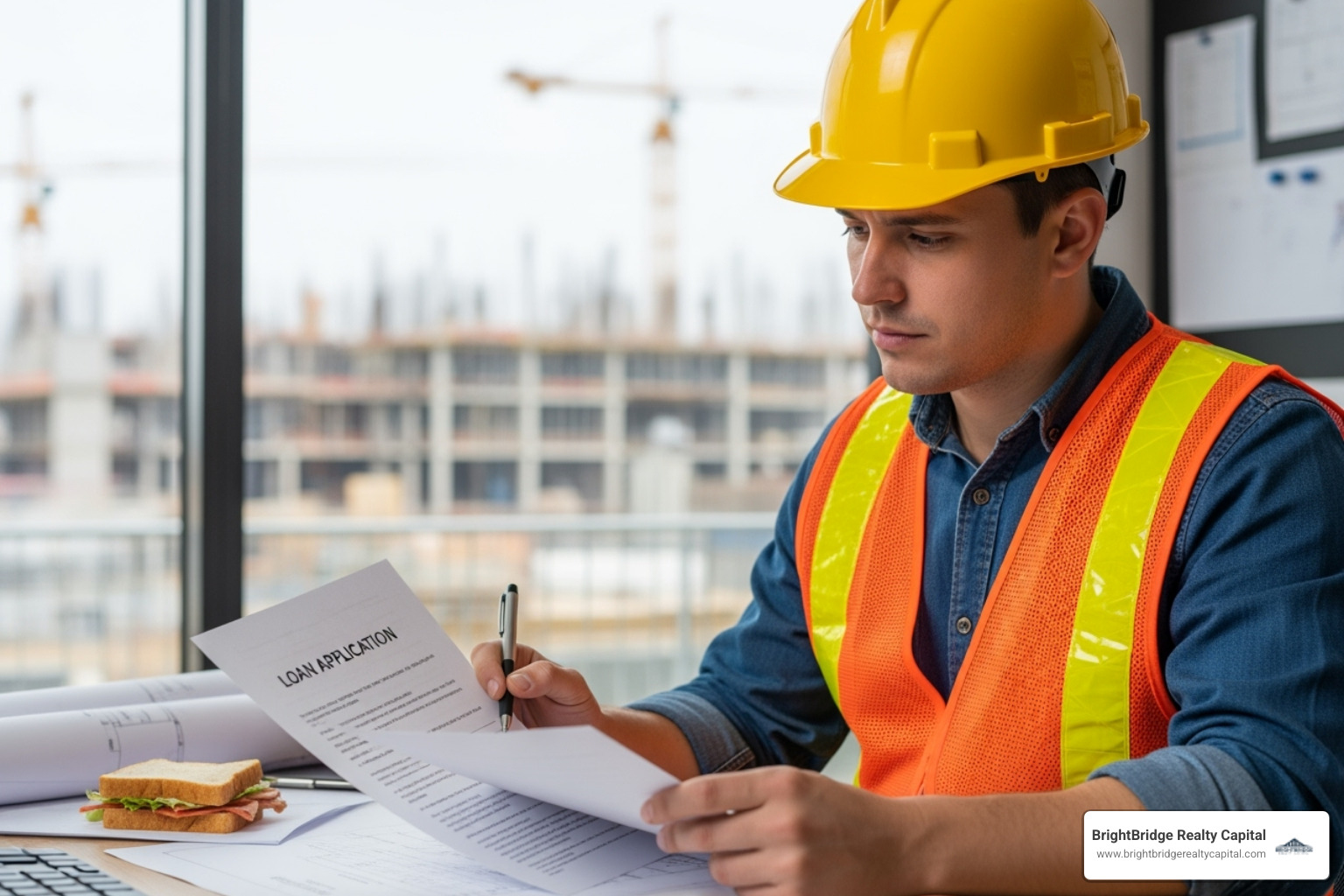
Securing a builder loan requires careful preparation, much like planning a major expedition. With the right approach, it's entirely achievable. This guide will walk you through lender requirements, the application process, and how to finance your land purchase.
What are the eligibility criteria for a builder loan?
Lenders need to see that you are prepared and capable of completing the project. Key eligibility criteria include:
- Credit Score: A minimum of 680 is typical, with 700 or higher being ideal.
- Down Payment: Expect to provide 20-25% of the total project cost. Equity from land you already own can often be used to meet this requirement.
- Detailed Plans: Professional architectural blueprints and a realistic, comprehensive budget are required.
- Experienced Builder: Lenders require a general contractor with a solid track record and proper licensing.
- Financial Stability: Beyond credit, lenders assess your income and debts. Your debt-to-income ratio should generally be between 35-50%.
Step-by-Step Application Process
The application process is manageable when broken down into steps. At BrightBridge Realty Capital, we've streamlined it for efficiency.
- Project Planning: Finalize architectural plans, get contractor bids, and create a comprehensive budget.
- Lender Selection: Choose a lender specializing in builder loans.
- Document Submission: Provide plans, budget, builder credentials, and personal financial statements.
- Property Appraisal: An appraiser determines the future value of the completed project.
- Underwriting & Approval: Our team reviews your file to assess risk and approve the loan.
- Closing: All paperwork is finalized. The process typically takes about two months, but we often move faster for well-organized projects.
Financing Land Acquisition
If you don't own the land yet, your builder loan can often include the purchase. The first draw typically covers the land acquisition, with lenders financing 65-75% of the land's cost. If you already own the land, its equity value can serve as your down payment for the construction loan, potentially reducing your out-of-pocket cash needs. In some cases, seller financing can be structured to allow for up to 100% loan-to-cost financing. Planning your land and construction financing as a single package is essential for success.
Exploring Different Types of Builder Loans and Programs
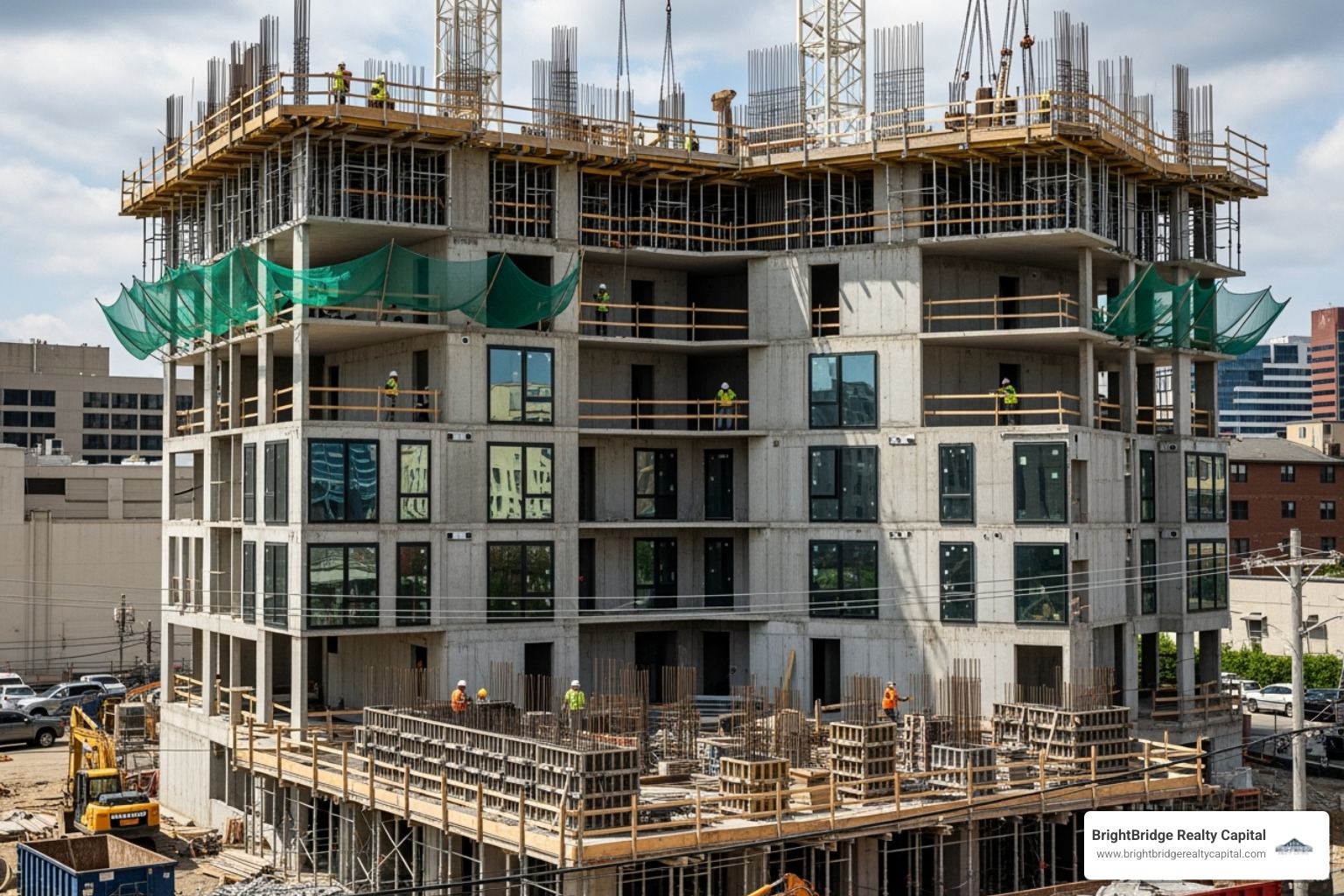
Not all construction projects are the same, and neither are builder loans. Different types of financing exist for different purposes and borrowers. Whether you're a first-time home builder or a seasoned developer, understanding specialized programs can save you money and streamline your financing.
Loans for Primary Residences vs. Investment Properties
Lenders view loans for a primary residence differently than those for investment properties.
- Primary Residence: Building a home you will live in is seen as lower risk. This often results in more favorable interest rates and higher Loan-to-Cost (LTC) ratios.
- Investment Properties: Projects like speculative builds (flips) or build-to-rent properties are considered higher risk. This means stricter requirements, higher interest rates, and LTC ratios often capped around 85%. For build-to-rent projects, however, lenders can factor in potential rental income when qualifying you for the loan, which can boost your borrowing power.
Specialized Programs: Owner-Builder and Frequent Builder
Specialized programs cater to unique borrower needs.
- Owner-Builder Loans: For investors acting as their own general contractor, these loans can save money on GC fees. However, lenders will heavily scrutinize your construction experience. Expect to demonstrate higher equity (often 30%+) and have an excellent credit score (often 720+ FICO).
- Frequent Builder Frameworks: These programs are for established developers with a proven track record. They offer a streamlined application process and faster access to capital for new projects, recognizing the builder's experience and financial strength. This can be a significant competitive advantage.
Understanding the Costs and Leveraging Your Loan
Understanding all costs upfront is essential for a successful project. Builder loans have higher interest rates than traditional mortgages because lenders take on more risk with an unfinished property. However, most offer interest-only payments during construction, and you only pay interest on funds that have been drawn. This structure significantly helps manage cash flow during the build phase.
Typical Interest Rates and Fees
Builder loan interest rates typically range from 7.99% to over 10.99%, depending on your qualifications and the project. In addition to interest, expect fees such as:
- Origination fees: 1-3% of the loan amount.
- Underwriting fees: Around $950.
- Appraisal fees: For valuing the future project.
- Inspection fees: About $150 per draw.
- Title insurance and legal fees.
- Extension fees: 0.5-1.0% if the project runs long, making it crucial to stay on schedule.
Tips for managing your builder loan successfully
Successful loan management requires diligence.
- Maintain a contingency fund of 10-15% of your total project cost for unexpected issues.
- Track your budget carefully to catch overruns early.
- Communicate clearly with your builder about changes and delays.
- Make regular site visits to monitor progress and quality.
- Ensure timely draw requests are submitted to maintain project momentum.
- Understand your loan agreement completely, including the draw schedule and interest calculations.
Frequently Asked Questions about Builder Loans
When you're considering a builder loan for your next project, it's natural to have questions. Over my years helping investors at BrightBridge Realty Capital, I've noticed the same concerns come up again and again. Let me address the big three that keep people up at night.
Can I get a builder loan with no money down?
It's uncommon but possible, primarily if you own land with significant equity that can cover the typical 20-25% down payment requirement. Even in this scenario, you will still need substantial cash reserves (often $15,000+) for unexpected costs. While some specialized programs offer 100% Loan-to-Cost financing, they come with stricter requirements and higher rates to compensate for the lender's increased risk.
Do I make payments on a builder loan while the house is being built?
Yes. During construction, you make interest-only payments only on the funds that have been disbursed. For example, if your loan is $500,000 but only $150,000 has been drawn, you only pay interest on the $150,000. Your payments gradually increase as more funds are released. This structure helps manage cash flow. Once construction is complete, the loan converts to a permanent mortgage, and you begin making principal and interest payments on the full amount.
What happens if my construction project goes over budget?
This is why a contingency fund is essential. If costs exceed your budget and contingency, you must cover the overages with your own funds. Lenders will not typically increase the loan amount mid-project, as the loan was based on the original budget and appraisal. Running out of money can stall your project and lead to severe consequences. A 10-15% contingency fund is not optional; it's critical insurance for your project's success.
Conclusion: Building Your Future with the Right Financing
Builder loans are powerful tools that open up opportunities for significant financial growth that traditional mortgages can't offer. They allow you to purchase land, fund construction in stages, and manage cash flow effectively, whether you're building a custom home or an investment property.
Success hinges on careful planning, including a robust contingency fund and working with experienced contractors. Partnering with the right lender is crucial. You need a team that understands construction financing and can move quickly.
At BrightBridge Realty Capital, our direct lending approach and fast closings—often within a week—ensure your project stays on track. We provide the flexible and fast financing solutions to turn your vision into reality.


